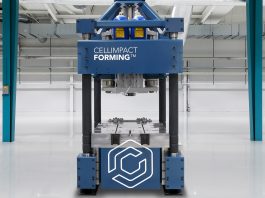Ashley Burke, Senior Vice President of Communications at the National Mining Association, outlines the vast potential of the US to become a top global lithium producer.
The US mining industry is vast and a major economic contributor, worth an estimated $82bn as of 2020. As well as being a large mineral producer, the US is also a major consumer of minerals. The most common commodities produced in the US mining industry include iron, copper, uranium, gold, silver, and sulfur. However, despite it being a highly sought-after product in today’s society, lithium supply in the US is currently limited to just one production site.
With considerable reserves, the US was once a top producer of lithium, but the majority of this production began to move overseas in the 1970s. As the clean energy transition takes hold, it is clear that the supply of critical minerals used for power, electricity and electric vehicles (EVs) will need to increase dramatically. In response to this, the Biden-Harris Administration has made various commitments to strengthen domestic supplies of critical minerals. Re-establishing America’s place as a top lithium producer is a key aspect of this.
Representing the US mining industry, the National Mining Association (NMA) is a trade association committed to ensuring secure and reliable mineral supply chains in America.
Can you tell us more about the National Mining Association and your key aims and objectives?
The National Mining Association (NMA) is the only national trade organisation that serves as the voice of the US mining industry and the hundreds of thousands of American workers it employs before Congress, the federal agencies, the judiciary and the media, advocating for public policies that will help America fully and responsibly utilise its vast natural resources. We work to ensure America has secure and reliable supply chains, abundant and affordable energy, and the American-sourced materials necessary for US manufacturing, national security and economic security, all delivered under world-leading environmental, safety and labour standards. Headquartered in Washington, D.C., the NMA has a membership of more than 250 companies and organisations involved in every aspect of mining, from producers and equipment manufacturers to service providers.
What is the US’ current landscape for lithium mining, and what potential does it have for further development?
Currently, the US has only one lithium production site — Silver Peak in western Nevada – but there is huge potential here in the US. As the most recent United States Geological Survey (USGS) report showed, we imported more than 25% of the lithium we used last year, and demand is poised to soar in the decade ahead. Most of our imports in 2022 were from Argentina and Chile, and we also imported lithium from Russia and China. Importantly, we could be sourcing it here at home. The US is the fourth largest global lithium reserve holder, but just 1% of global lithium is mined and processed in the US.
There are many high-quality, promising projects in the pipeline – Lithium Americas (Thacker Pass, Nevada), Piedmont Lithium (North Carolina and a facility in Tennessee), Standard Lithium (California, Arkansas), Ioneer (Nevada), 3 Proton Limited (Nevada), to name a few – that, with the right permitting and financing support from the US, could be producing in the near future.
Why is it important to establish a strong domestic lithium supply chain in America?
With lithium and other mineral demand expected to increase up to 50-fold by 2040 – and as we saw with the recent release of the 2023 USGS Mineral Commodity Summaries, which showed our important dependence has reached historic levels – we need to move much smarter and faster to bring projects online.
We are also seeing that the nations that have developed these mineral supply chains – particularly China – are racing ahead in building the downstream industries that are dependent on these essential materials. China dominates the lithium supply chain and is now home to more than 70% of the world’s lithium-ion battery manufacturing. Chinese electric vehicle producers have a leg up and are transforming China’s auto sector into a major global player. Remarkably, China exported more cars last year than Germany.
What are the major challenges to securing this supply chain and how can they be overcome?
It takes ten years to permit a mine here in the US, while our allies such as Canada and Australia, with similarly stringent environmental and safety standards, can do it in two to three years. The bureaucratic inertia embedded in our current permitting system must be addressed. Insufficient supply of key minerals like lithium is already getting in the way of manufacturing electric vehicles and transitioning to reduced emissions transportation. That problem will only increase as time goes on and new projects idle in the permitting loop. There are ample domestic resources and extremely promising projects that are currently in the permitting process, awaiting approvals from the administration. These projects would begin the urgent task of reshoring essential supply chains.
The US can strengthen our supply chains and provide high-quality, secure jobs for Americans by supporting domestic mining projects while maintaining robust environmental protections. The overarching objectives for streamlining the permitting system for mining should be to, first, minimise delays by setting and adhering to timelines and schedules for completion of the permitting process; and track progress of the process to provide accountability. Additionally, federal agencies involved in reviewing projects for permits or other authorisations should be required to avoid duplicative reviews (for example, the lead agency should defer to and rely on baseline data, analyses and reviews performed by state agencies with jurisdiction over the proposed project; conduct any consultations or reviews concurrently rather than sequentially to expedite the process; and establish timelines for each major step of the permitting process).
How are you working to ensure that lithium mining progresses in an environmentally responsible manner?
The US is already home to the world’s highest environmental, labour, and safety standards, and mining projects operating here not only meet those standards but often exceed them. What critics of mining should understand is that these minerals will come from somewhere, and it benefits us all to ensure that they are mined in the US, where we know they will be mined in accordance with those high standards.










